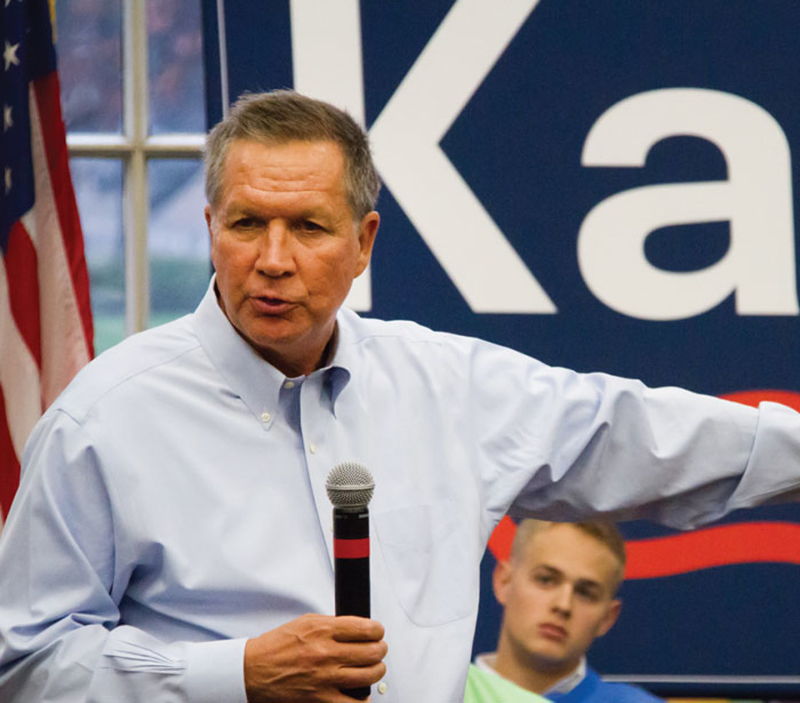Hey hey Cincy. Did you enjoy Oktoberfest or any of the other million things that were going on around town this weekend? I definitely did. But now it’s back to the grind, eh? So let’s get to some news.
If you took the streetcar this weekend during your festival revelry, you might have waited a little longer than expected. Leading into the weekend, the transit system was having trouble hitting its goal of picking up passengers at stops every 12-15 minutes. But officials with the Southwest Ohio Regional Transit Authority and the city believe they have solutions for the problem. Mainly, they’ll be adjusting traffic signals to better align with the timing of the streetcar and to loosen up the general flow of traffic through downtown and Over-the-Rhine. The city wanted to wait until after the streetcar launched to make any traffic signal adjustments but will now begin tweaking the stoplight schedule. There may also be bigger changes down the road: a $200,000 downtown traffic study that will be completed next year could shed light on other changes the city can make to improve overall traffic and streetcar operations along the 3.6-mile loop. In the meantime, you can read a very detailed breakdown of traffic light schedules and how they interact with the streetcar here.
• The Cincinnati Police Department yesterday launched the second wave of its roll-out of more than 700 police body cameras as officers in the city’s East Side neighborhoods covered by CPD District 2 began using the devices. Ninety-seven officers in that district will use the cameras, which record while police are on duty and send footage back to be stored on a server. Last month, 136 officers in CPD District 1, which covers downtown, started using the cameras. Officers in other districts will receive the devices in roughly two-week increments, starting with 115 officers in District 5 early next month. One-hundred-twenty-four officers in District 4 will get them later that month, and 148 officers in District 3 will receive them in November. CPD’s traffic and gang units will also be getting 64 of the cameras that month. Departments across the country have begun utilizing the body cameras for police officers, especially following controversial police shootings caught on video, including the shooting death of black motorist Samuel DuBose by white University of Cincinnati Police Officer Ray Tensing last summer. Tensing was wearing a body camera at the time of DuBose’s death and is due in court next month on murder and manslaughter charges.
• In the wake of that shooting, UC is seeking more independent oversight around its policing efforts on campus and in surrounding neighborhoods. The school hired consulting firm Kroll to investigate the DuBose shooting and another, Exiger, to take a wider look at UC’s police department and make recommendations about reforms necessary to prevent a similar incident in the future. Now, it will hire a third to help UC implement Exiger’s recommendations and monitor the school’s police department for compliance. The firm that will perform this oversight role hasn’t been selected yet, but UC has sent out requests for proposals in its search.
• The Wasson Way bike trail got a big step closer to reality late last week when the city of Cincinnati officially closed on the purchase of the former railway land needed to complete the project. The city paid Norfolk Southern Railway nearly $12 million for the 4.1-mile stretch of track along Wooster Pike just outside the city in Columbia Township and Montgomery Road in Evanston. Construction is expected to begin next year on the path, and the entire trail is projected to extend from Xavier University east to the Little Miami Bike Trail.
• As Ohio has struggled with an opioid addiction crisis, pharmaceutical companies over the last decade have quietly been pouring money into lawmakers’ campaign funds to suppress prescription limits on pain medication and other legislative efforts to curb addictions. An Associated Press investigation found that companies that manufacture pain medications containing opioids and their closely linked trade groups have given more than $3.5 million to state and federal candidates in Ohio over the last decade in an effort to push back on limits to the drugs. Many of the recipients have been Republicans, including high-level politicians like former House Speaker John Boehner, who received more than $800,000, and Ohio Gov. John Kasich, who got more than $40,000. That giving is linked to similar efforts in many states to push back against regulations on the drug industry. Overprescription of opioids has been linked to the ongoing heroin addiction crisis, as individuals who started out hooked on prescription pills look for a cheaper, stronger high found in street drugs.
• As you might expect, that crisis has become a political talking point as local office-seekers jockey for position ahead of the November election. You can read more about how the heroin issue has worked its way into races for U.S. Senate, Hamilton County Sheriff, County Commissioner, and more here. It’s likely to be a major, defining topic going into the last weeks before the election as overdoses continue to mount with little relief in sight.
• Finally, Ohio Gov. John Kasich and the leaders of the Republican National Committee are still tussling over GOP presidential nominee Donald Trump with less than two months left until the November election. RNC Chairman Reince Priebus has been calling Kasich out for refusing to endorse Trump, saying Kasich’s lack of support could make things hard for his political future. Kasich’s camp fired back with a pretty mouthy and belittling statement calling Priebus a “Kenosha political operative” who isn’t standing up for Republican principles and who could very well lead the party to a devastating loss in November. Kasich further pushed the envelope last week by appearing with President Barack Obama at a press event around the Trans Pacific Partnership, a series of trade agreements opposed by both Donald Trump and his Democratic presidential rival Hillary Clinton. Kasich’s move was bold and a little unprecedented — making a high-profile appearance with a sitting president from a rival party just weeks before an election to boost a policy his own party’s presidential nominee has railed against. Don’t be surprised if bad blood continues between Kasich and Priebus after the ballots close.






